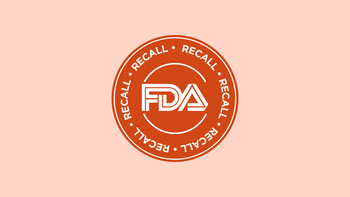
Glipizide Dosages: Your GoodRx Guide
Key takeaways:
Glipizide is an oral medication that’s used to treat Type 2 diabetes in adults. It’s available as an immediate-release (IR) and extended-release (ER) tablet that’s taken once or twice a day.
The typical glipizide starting dosage is 5 mg once daily. But older adults and people with liver problems may start with a lower dosage. Your dosage may be raised based on how your blood glucose (sugar) responds to treatment.
Glipizide IR and glipizide ER are both available as lower-cost generics. You can find them for less than $20 at certain pharmacies with a free GoodRx discount.
Access savings on related medications
Table of contents

Glipizide is an older medication available to treat Type 2 diabetes. It’s a sulfonylurea that works by telling your pancreas to release more insulin. Glipizide can be used alone or in combination with other diabetes medications, like metformin. A healthy diet and exercise will also help keep your blood glucose (sugar) in check.
In this guide, we’ll take a look at typical glipizide dosages. It’s possible that your healthcare provider may want you to take glipizide differently. If you have any questions about your dose, speak to your pharmacist or healthcare provider.
What’s the typical glipizide dosage for adults?
Glipizide is an oral medication that’s available as immediate-release (IR) and extended-release (ER) tablets (Glucotrol XL). The ER form delivers the medication more slowly throughout the day.
Save over 40% on Qsymia with GoodRx
Discover the once daily Qsymia for weight management. Qsymia is for adults and children 12-17 in combination with a healthy diet and regular exercise.

IR tablet dosage
A common glipizide IR starting dosage is 5 mg taken 30 minutes before breakfast (or your first main meal of the day). Certain people at higher risk of low blood glucose (hypoglycemia) may need to start with a 2.5 mg dose. This includes older adults, people with liver problems, and those taking other diabetes medications.
Depending on how you respond, your dosage may be raised to a maximum of 40 mg daily. If your dosage gets higher than 15 mg per day, it’s usually divided into 2 doses per day. The first dose is typically taken before your first meal (e.g., breakfast), and the second dose is before your last meal (e.g., dinner).
ER tablet dosage
The starting glipizide ER dosage is 5 mg given once daily 30 minutes before breakfast. Like the IR version, certain people should start with the 2.5 mg dose. The highest glipizide ER dosage is 20 mg once daily.
If you’re currently taking glipizide IR, you may be wondering if you can switch to glipizide ER. The short answer: Yes. But this is only an option if you’re taking 20 mg or less daily.
Your healthcare provider can help you figure out if making the switch is right for you.
Are there any dosage adjustments for medical conditions?
As with any medication, it’s important to know about dosage adjustments. Sometimes, these are recommended because of age or other medical conditions.
Age
Older adults have a greater chance of experiencing problems associated with hypoglycemia. In this case, your healthcare provider may start you at 2.5 mg daily. If needed, your dosage can be raised slowly to give your body time to adjust.
Kidney problems
Glipizide doesn’t need any specific dosage adjustments if you have mild to moderate kidney problems. In fact, it’s considered one of the safer sulfonylureas when kidney problems are present.
But if you have severe kidney problems, the risk of hypoglycemia goes up. In this case, you may need to start with a lower dosage and watch your blood glucose more often during treatment.
Liver problems
Glipizide is broken down by your liver. If you have liver disease, your body may not break it down efficiently. Because of this, your dosage may start at 2.5 mg once daily. From there, it may be raised cautiously to match your blood glucose response.
What happens if you miss a dose of glipizide?
If you miss your scheduled glipizide dose, you can take it 30 minutes before your next meal. But if it’s almost time for your next dose, skip the missed dose and take your next dose at the usual time. Make sure that you always take glipizide before a meal to avoid hypoglycemia.
For your safety, never double up on your glipizide dose to make up for any missed doses. If you have questions about the timing of your dose, call your pharmacist or healthcare provider.
What should you do if you take too much glipizide
Taking too much glipizide could result in hypoglycemia. This happens when your blood glucose drops below 70 mg/dL. You may feel symptoms such as shaking, sweating, or a fast heartbeat. Confusion, nausea, or headache may also occur. This is even more likely to happen if you’ve skipped meals or eaten less food than what’s normal for you.
If you notice any of these symptoms, check your blood glucose level right away. If it’s low, follow the directions you’ve been given to bring your blood glucose back into a safe range. This typically includes consuming 15 gm of fast-acting sugar (e.g., ½ cup fruit juice or regular soda). If your blood glucose is below 55 mg/dL, you may need medical care.
If you think you’ve taken too much glipizide, contact your healthcare provider or call Poison Control at 1-800-222-1222. If any side effects feel severe or life-threatening, go to your nearest emergency room.
How to save on glipizide
Glipizide IR and glipizide ER are both available as lower-cost generics. Glipizide ER is also available as a brand-name product called Glucotrol XL.
GoodRx can help you save over 50% off the average retail price of the generic versions. Generic glipizide IR’s price at certain pharmacies is as low as $10.28 with a free GoodRx discount.
Generic glipizide ER’s price at certain pharmacies is as low as $15.56 with a free GoodRx discount. And Glucotrol XL’s price is as low as $9.00.
The bottom line
Your glipizide dosage will depend on which form you’re taking. The IR form is taken once or twice a day, while the ER is taken once daily. Typical glipizide dosages range from 5 mg to 20 mg (ER) or 40 mg (IR) daily. Some people may need to take a lower dosage because of the risk of hypoglycemia.
Make sure to talk to your healthcare provider or pharmacist if you have questions about your glipizide dosage.
Why trust our experts?



References
Abdelhafiz, A. H., et al. (2015). Hypoglycemia in older people- A less well recognized risk factor for frailty. Aging and Disease.
Betônico, C. C. R., et al. (2016). Management of diabetes mellitus in individuals with chronic kidney disease: therapeutic perspectives and glycemic control. Clinics.
DailyMed. (2022). Glipizide.
DailyMed. (2022). Glipizide ER.
White, J. R., et al. (2014). A brief history of the development of diabetes medications. Diabetes Spectrum.
Was this page helpful?
Related Articles
Browse medications
View AllResearch prescriptions and over-the-counter medications from A to Z, compare drug prices, and start saving.

























